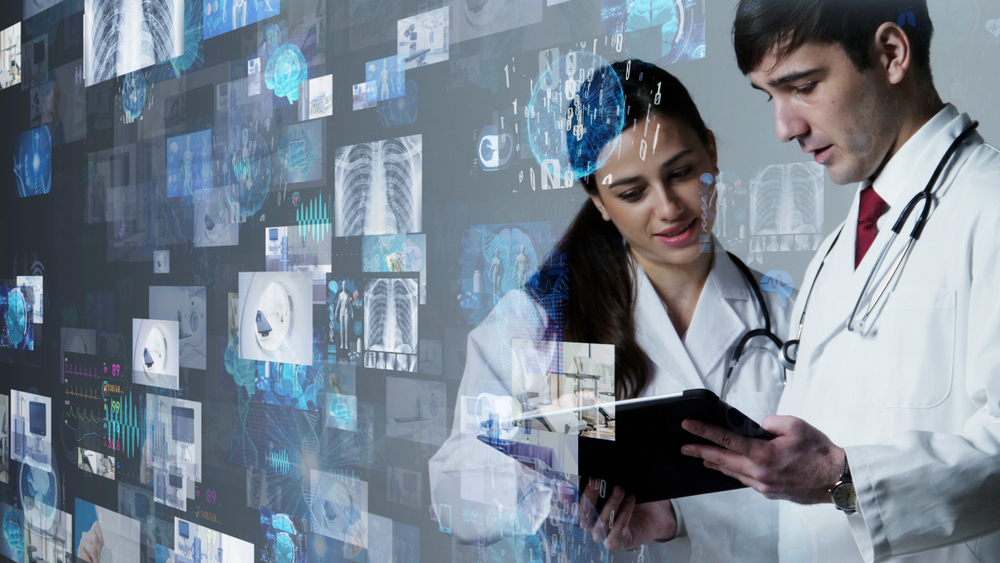
Group Leader - Research & Development
Southwest Research Institute
Overview
Hakima Ibaroudene discusses how she and her team at SwRI utilize the benefits of using AI in the medical field.
Applying proper diagnoses is a tedious and complicated task that doctors face every day. The time and effort required to accurately diagnose a patient can diminish the potential care that a medical staff can provide to their patients.
Where the medical field has seen drastic changes in the technology used, and with the ever-increasing capabilities of treatments that are now available, Hakima’s team wanted to find a way to give doctors more time to apply that human empathy and touch that is so critical for the best medical experience possible.
Where it may take experts hours to review and make diagnoses on images, it will only take a properly trained AI algorithm minutes to come to the same conclusions. By using neural networks and deep learning, the SwRI team was able to develop flexible, accurate, and scalable algorithms that were able to mimic the predictions of their human expert counterparts with great accuracy.
In order for a neural network to accurately predict an outcome it needs to be taught what to look for and what to ignore. It then needs to be told whether its predictions are correct or incorrect. This training process can and should be intensive. The more examples that can be provided in quantity and variety the better the algorithm will be able to predict an outcome.
The SwRI team entered an international image classification competition where they placed first. This gave the team the confidence to use their AI expertise to build out further algorithms for different purposes. The way in which this was done was by introducing new constraints to the neural network and then comparing those results with that of what the doctors agreed with. This iterative process of altering the constraints of the neural network and providing it with feedback on its’ predictions allowed for the SwRI team to build a very accurate breast cancer biopsy predictor.
Neural networks have proven to be a great tool for classifying images and the scope of which this can be applied to far exceeds that within the medical field. However, something unique about using this technology within this field as Hakima’s team has done, is that this can quite literally be making life or death decisions. So, the question must be asked, how much can or should we trust deep learning and the neural networks that are built when it comes to the matter of an individual’s life?
Neural networks operate by running data sets through, as referenced in the Machine Learning community, a black box. This black box represents a series of mathematical calculations and statistical computations that, to the layman, far exceed understanding. We can affect the predicted outputs by modifying the constraints of the data that feeds into the black box but the actual decision-making process cannot usually be traced from beginning to end in a way that can be easily understood.
This can be troubling, to make decisions with potentially grave consequences when the decision-making process cannot be analyzed with every step that is taken. Even experts in AI, often can only explain results to a certain level of granularity. They can point to constraints and feature importance that lead to specific outcomes but cannot walk the exact path the algorithm took to explain every result. Furthermore, it would be difficult to say what an algorithm will predict when it comes across a situation that is outside of the scope that it has been trained on.
"There needs to be a handshake between the domain and the AI expert. The AI can provide some kind of prediction and the domain expert needs to say does this make sense or not."
For these reasons, neural networks and deep learning can and should be used as tools to aid the medical community. But these algorithms and this technology will not replace the expertise of medical professionals. Human experts will always be needed to continue to train these algorithms. They will always be needed to identify the unique situations that exceed the scope of what can easily be defined.
Hakima and the team at SwRI have taken all of the correct steps of integrating experts in AI and the medical community to work together. In this way the benefits of AI can be realized and utilized effectively and efficiently. Doctors can focus on more complicated cases and can continue to help build algorithms that effectively predict diagnoses for the standard cases. AI is a powerful tool that requires training, integration, and continual feedback in order to be utilized properly by experts in both AI as well as in the fields the algorithms are being used in.
 BACK
BACK

